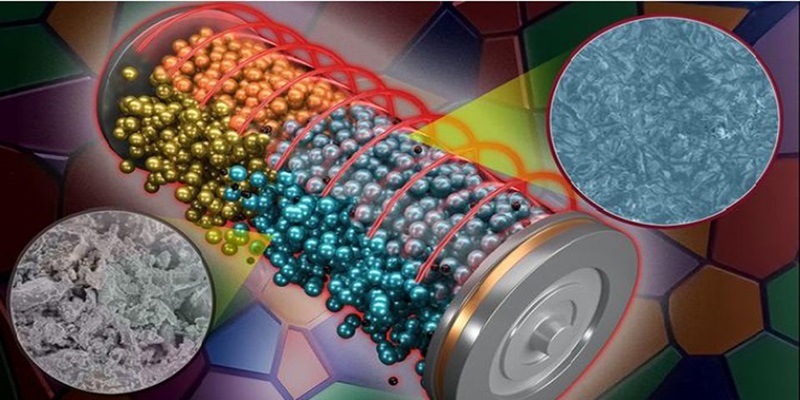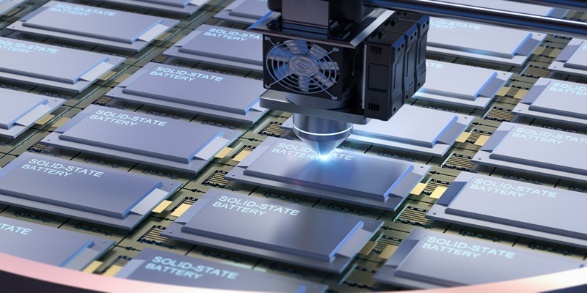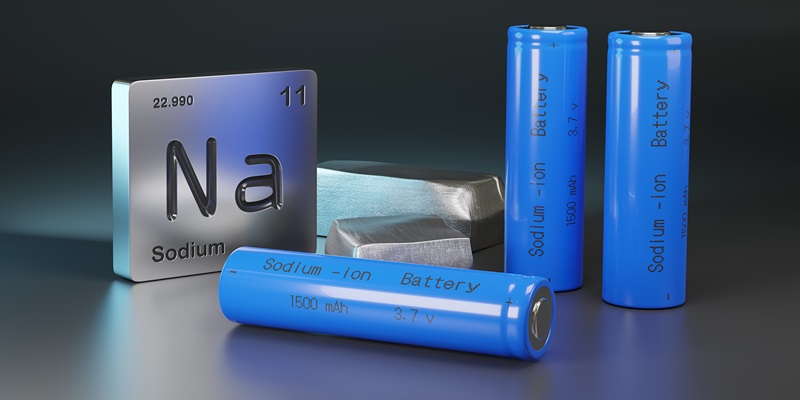Solid-State Batteries: Powering the Next Generation of Devices
Author: Elison
As you navigate the ever-evolving landscape of electronic devices, you may have heard whispers about a revolutionary technology: solid-state batteries. These power sources promise to transform your gadgets, offering longer life, faster charging, and enhanced safety. But what exactly are solid-state batteries, and are they indeed poised to reshape the electronics industry? You're about to embark on a journey through the world of this cutting-edge technology, exploring its potential to revolutionize everything from smartphones to electric vehicles.
The Science Behind Solid-State Technology

The Fundamentals of Solid-State Batteries
Solid-state batteries represent a significant leap forward in energy storage technology. Unlike traditional lithium-ion batteries, which use liquid electrolytes, solid-state batteries employ solid electrolytes. This fundamental difference is the key to their potential advantages.
The solid electrolyte is the separator between electrodes and the medium for ion transport. This design eliminates the need for liquid components, resulting in a more compact and potentially safer battery structure. The absence of flammable liquids reduces the risk of thermal runaway, a significant safety concern in conventional batteries.
Material Science Breakthroughs
Recent advancements in material science have paved the way for solid-state battery development. Researchers have explored various materials for solid electrolytes, including ceramics, polymers, and glass ceramics. Each material offers unique properties, such as high ionic conductivity or mechanical stability.
One promising candidate is sulfide-based solid electrolytes, which exhibit excellent ionic conductivity. However, challenges remain in terms of their stability and manufacturing scalability. Other materials, like oxide-based electrolytes, offer enhanced stability but face hurdles in achieving high conductivity at room temperature.
Overcoming Technical Challenges
While solid-state technology has great potential, several technical barriers must first be addressed. Electrode-solid electrolyte interface stability is a critical issue, with poor contact producing increased resistance and a loss in performance. Developers are working with new approaches, such as new materials for electrodes and engineering techniques for interfaces, to make batteries efficient and long-lasting.
Strengths of Solid-State Batteries over Traditional Lithium-Ion

Increased Safety
Solid-state batteries are a significant improvement in terms of security over traditional lithium-ion batteries. By replacing a flammable liquid with a solid, batteries effectively eliminate any opportunity for fires and explosions. As such, batteries can be perfectly safe for use in automobiles, where battery security is a paramount concern.
Increased Energy Density
One of the most exciting strengths of solid-state batteries is their high potential for increased energy density. With batteries storing more in a similar footprint, the range for automobiles and battery life for handheld gadgets could double, too. Estimates have even gone so far as to say that batteries could have an energy density 2.5 times that of current lithium-ion batteries.
Increased Charging Capabilities
Solid-state batteries have a high potential for charging at a much-increased rate compared to traditional lithium-ion batteries. With a solid electrolyte, batteries can withstand a lot of voltage and current, which could mean less charging for automobiles and high-capacity gadgets in general.
Longer Battery Life
A significant benefit of solid-state batteries is increased longevity. With less degradation over a period of use, batteries can preserve capacity for a larger number of charge cycles and, in theory, could last many years in use in a variety of gadgets and machines.
Strengths and Weaknesses in Adopting Solid-State Batteries
Manufacturing Hurdles
Solid-state batteries have a high production hurdle. Replicating thin, uniform solid electrolytes in a complex process and then producing them in bulk in an economically feasible manner with current technology is challenging. This bottleneck hinders widespread use in industries.
Performance in Harsh Temperature
Performance in extreme temperatures is a challenge for solid-state batteries, even with much potential. In extreme temperatures, the conductive properties in the solid electrolyte can drop, and the efficiency in batteries can degrade. High temperatures can cause an undesired chemical reaction, and extreme temperatures can even jeopardize life and life span. Overcoming temperature-related concerns is essential for successful real-life use cases.
Cost Factors
The high cost of materials and the complex processes involved in developing them make solid-state batteries much costlier than conventional lithium-ion batteries. The high cost of rare earth materials, in many cases utilized in solid electrolytes, raises expenses even further. Until economies of scale and technological breakthroughs make production cheap, the widespread use of consumer goods can become challenging.
Long-term Durability and Cycling
Some types of solid-state batteries have concerns about long-term durability and performance over several charge-discharge cycles. Repeated expansion and contraction of electrodes can cause micro-fissures in the solid electrolyte and, in extreme cases, degradation in battery life and capacity. Overcoming such durability concerns is essential for competing with conventional technology in long-term use cases.
The Future of Solid-State Batteries: Empowering Next-Gen Products

Ground-Breaking Possibility
Solid-state batteries can transform the electronic era. With an increased density, batteries can make smartphones, computers, and cars last days, not hours, and even enable cars to drive over 500 miles between refuellings. That's not a dream but a future reality that can become a reality with solid-state batteries.
Safety and Stability
One of the most exciting factors about solid-state batteries may be their safer profile. Unlike lithium-ion batteries, solid-state batteries utilize a solid form of an electrolyte, not a liquid, and cannot leak or blow up. That added stability could mean safer consumer goods and cars, which could drive them onto store shelves and into your driveway even sooner.
Challenges and Opportunities
The potential for solid-state batteries is enormous, but obstacles must first be overcome. Mass production processes must become efficient, and pricing must drop to make them commercially viable. Still, big technology companies and car companies have big bets riding, and confidence in them is high. As development continues and technology advances, it won't be long before solid-state batteries start powering your gadgets, and a new era of long-lasting, safe, and powerful gadgets begins.
The Future of Power is Solid
In the future of gadgets and gadgets in your life, solid-state batteries have much to say about changing them for the better. Challenges must first be overcome, but solid-state technology is an exciting future to explore with increased safety, extended lifespans, and rapid charging, and with development and production moving in a positive direction. As development continues and production scales, solid-state batteries will appear in your gadgets, cars, and renewable energy storage in no time.



